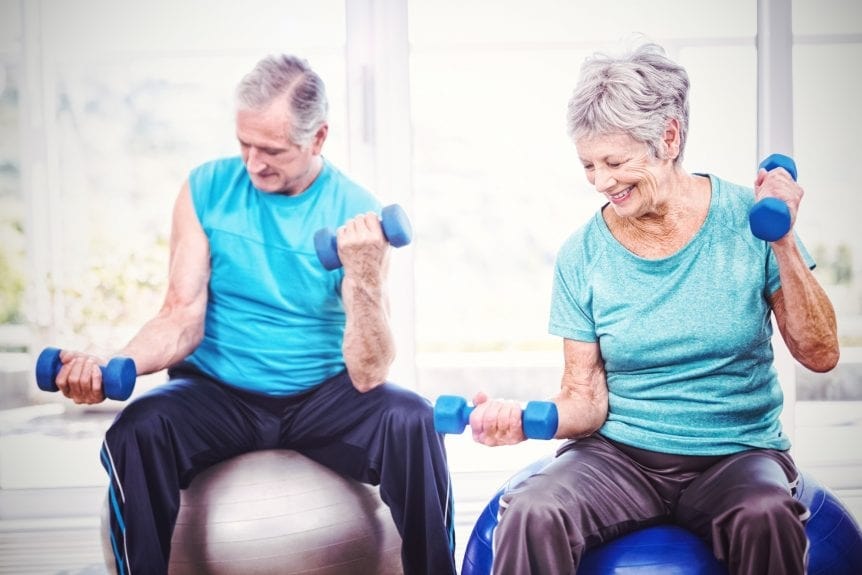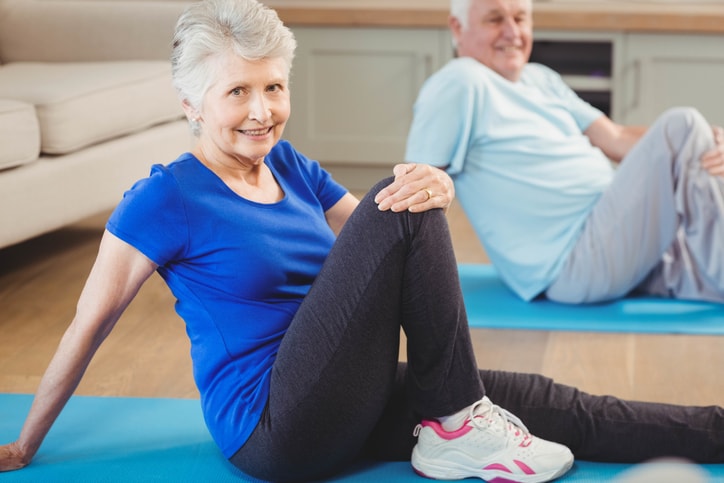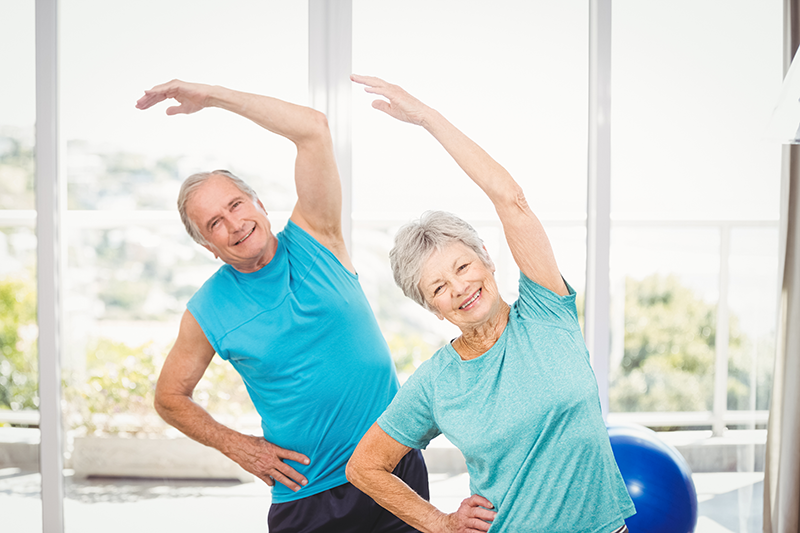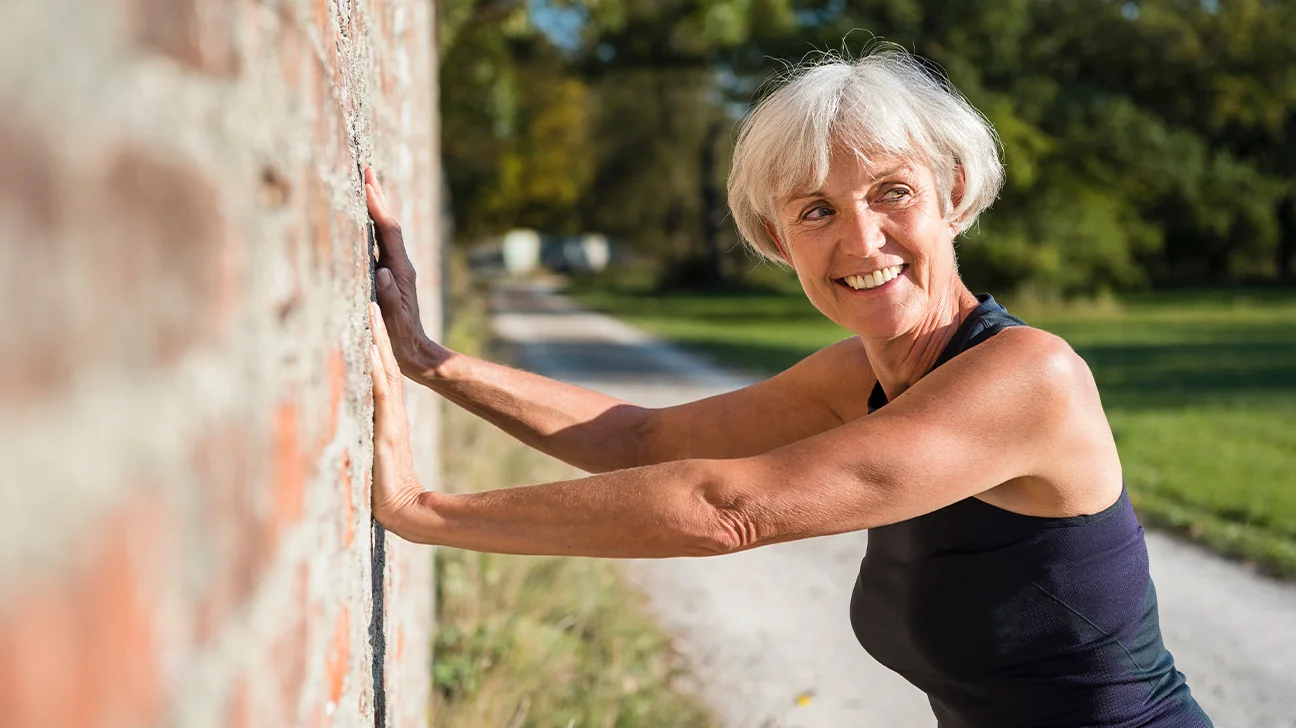Isometric exercises for seniors offer a gentle yet effective way to strengthen muscles without causing undue strain on the joints. These exercises focus on holding static positions that engage the muscles, making them ideal for seniors who want to build strength and improve stability. With minimal movement required, isometric exercises can be easily adapted to different fitness levels, allowing seniors to gradually increase their strength and endurance. However, as with any exercise, it’s essential to approach these routines carefully, especially for older adults with existing health concerns or mobility limitations.
Safety should always be prioritized when incorporating isometric exercises into a senior’s fitness regimen. While these exercises are generally low-impact, performing them incorrectly or pushing too hard can lead to muscle strain or injury. This article will provide a comprehensive guide to safety tips and precautions seniors should follow when practicing isometric exercises. From understanding proper form to knowing when to rest, these guidelines will help seniors enjoy the full benefits of isometric exercises while minimizing the risk of injury.
Isometric Exercises for Seniors: Safety Tips & Precautions – Gentle Strength Building for Older Adults

Staying active as we age is key to maintaining good health and independence. Isometric exercises for seniors offer a great way for older adults to keep fit without putting too much stress on their joints. These simple movements can help build strength and improve balance.
Isometric exercises can be very safe for seniors when done correctly. They don’t require any special equipment and can be done almost anywhere. You can do some while sitting in a chair or at a counter.
Before starting any new exercise routine, it’s essential to check with your doctor. They can help you figure out which exercises are right for you. Remember to start slowly and listen to your body. If something hurts, stop and take a break.
Key Takeaways
- Isometric exercises offer a safe way for seniors to build strength and improve balance without putting excessive stress on joints.
- Seniors must consult their doctor before starting any new exercise routine to ensure safety, especially if they have pre-existing health conditions.
- Beginners should start with low-intensity exercises and short hold times, gradually increasing duration and intensity as they become stronger.
- Maintaining proper form and breathing during isometric exercises is crucial to avoid injury and enhance effectiveness.
- Seniors should always listen to their bodies and stop exercising if they experience pain or discomfort, ensuring a safe and effective workout experience.
Understanding Isometric Exercises
Isometric exercises for seniors are strength training where you hold a position without moving. Your muscles work hard, but they don’t change length. These exercises are great for building strength and stability.
You can do them almost anywhere; they don’t need fancy equipment. Some joint isometric exercises include:
- Wall sits
- Planks
- Bridges
- Static holds with weights.
Isometric exercises offer several benefits for seniors. They’re often safer for your joints compared to other exercises. This makes them suitable if you have arthritis or joint pain.
You can improve your strength with isometric exercises. They also help with balance by working your core muscles. When doing isometric exercises, remember to:
- Breathe normally
- Hold each position for 10-30 seconds.
- Repeat 3-5 times
Start slow and build up over time. If you feel pain, stop the exercise. Talking to your doctor before starting a new exercise program is always a good idea.
Benefits of Isometric Exercises for Seniors

Isometric exercises for seniors can be a great addition to your fitness routine as you age. These exercises involve holding a position without moving, which offers unique advantages. One key benefit is that isometric exercises are gentle on your joints. This makes them ideal if you have arthritis or other joint issues.
You can also do isometric exercises almost anywhere. No special equipment is needed, making them very convenient. These exercises help improve your strength and stability. This can boost your balance and reduce your risk of falls.
Isometric training may also help lower your blood pressure. Simple exercises like wall sits and planks can positively impact your heart health. Another plus is that isometric exercises can help maintain your muscle mass. This is crucial as you age since muscle loss is common with aging.
You might find isometric exercises more accessible to do than other types of workouts. They don’t require complex movements, so that you can focus on proper form. Lastly, these exercises can boost your confidence. You may feel more capable in your daily activities as you get stronger.
Safety Tips for Isometric Exercises
For seniors, staying safe while doing isometric exercises is key. These tips will help you avoid injuries and get the most out of your workout.
Consult Healthcare Providers
Before starting any new exercise routine, talk to your doctor. This is extra important if you have health issues like high blood pressure. Your doctor can tell you if isometric exercises are safe for you. They might suggest changes to make the exercises work better for you. A physical therapist can also help. They can show you how to do the exercises right.
Start with Low Intensity
Begin with easy exercises. Hold each position for just 5-10 seconds at first. You can slowly work up to longer holds as you get stronger. Don’t push too hard too fast. Listen to your body. If something hurts, stop. Try doing isometric exercises 2-3 times a week at first. You can add more days as you get used to it.
Focus on Proper Breathing
Breathing right is super essential in isometric exercises. Don’t hold your breath, as this can increase your blood pressure. Instead, breathe slowly and steadily. Try to breathe in through your nose and out through your mouth.
Keep your breaths even and relaxed. Count your breaths to help you stay focused. This can also help you track how long you’re holding each position.
Use Proper Form and Technique
Good form is key to getting the benefits of isometric exercises. Stand or sit up straight and keep your core tight. Don’t lock your joints, as this can hurt them. Instead, keep a slight bend in your elbows and knees. If you’re not sure about your form, ask a trainer or physical therapist for help. They can watch you and give tips to make sure you’re doing it right.
Incorporate Rest Days
Your muscles need time to recover, so don’t do isometric exercises daily. Take at least one or two days off each week. You can do other gentle activities like walking or stretching on your rest days. This helps keep you active without overworking your muscles. If you feel very sore or tired, take an extra rest day. It’s better to rest than to push through pain.
Precautions Before Beginning Isometric Exercises

Safety comes first when starting any new exercise routine. Taking a few key steps will help you get the most out of isometric exercises for seniors while avoiding injury.
Recognize Personal Limits
Know your fitness level before you begin. If you have any health issues, talk to your doctor first. They can tell you if isometric exercises are safe for you. Don’t push yourself too hard at the start.
Begin with simple moves and short hold times. You can build strength over time as your body gets used to the exercises. Set realistic goals for yourself and be patient with your body.
Prepare the Exercise Area
Pick a spot in your home with enough space to move freely. Clear away any clutter or objects that might get in your way. Make sure you have a sturdy chair or wall nearby for support.
This gives you something to hold onto for balance. Wear comfy clothes that let you move quickly. Choose shoes with a good grip to prevent slips. Keep any gear you need, like resistance bands or small weights.
Listen to Your Body
Pay attention to how you feel during exercises. If something hurts, stop immediately, as pain is abnormal and could mean you’re doing too much. Watch out for signs of strain like dizziness or shortness of breath. Take breaks when you need them.
Don’t hold your breath while doing isometric moves. Breathe normally to keep oxygen flowing to your muscles. If you feel tired, it’s okay to end your session early. There’s always tomorrow to try again.
Stay Hydrated
Drink water before, during, and after your workout. Even though you’re not moving much, your body still needs fluids. Keep a water bottle nearby so you can sip often. This helps prevent dehydration and muscle cramps.
If you exercise for over 30 minutes, consider a sports drink to replace electrolytes. Remember, thirst is a sign you’re already getting dehydrated. Try to drink before you feel thirsty.
Recommended Isometric Exercises for Seniors
These isometric exercises for seniors can help you build strength and improve balance without putting too much stress on your joints. They’re easy to do at home and don’t need any special equipment.
Wall Push
Stand facing a wall, about arm’s length away. Place your hands flat against the wall at shoulder height. Lean in, keep your body straight, and push against the wall as if trying to move it. Hold this position for 10-30 seconds, depending on your strength. Try to breathe normally as you push. This exercise works your chest, shoulders, and arms.
You can make it easier by moving closer to the wall or by stepping back a bit harder. Always keep your back straight and avoid locking your elbows. Do 3-5 sets, resting for 30 seconds between each. This exercise is excellent for improving upper body strength without putting stress on your joints.
Chair Squeeze
Sit in a sturdy chair with your feet flat on the floor. Place a pillow or rolled-up towel between your knees. Squeeze the pillow with your knees as hard as you can. Hold for 5-10 seconds, then relax. This works your inner thigh muscles and helps improve leg strength.
Start with 10 squeezes and build up to 20 as you get stronger. Take a short break between each squeeze. This exercise is perfect for those days you can’t leave the house. It’s also good for improving posture and core strength.
Plank Hold
Start on your hands and knees. Lower your forearms to the ground, keeping your elbows under your shoulders. Step your feet back, one at a time, so your body forms a straight line from head to heels. Hold this position for as long as possible, aiming for 10-30 seconds at first.
Keep your knees on the ground if a full plank is too hard. This modified version still gives you benefits for your core strength. Do 3-5 sets, resting for 30-60 seconds between each. As you get stronger, try to hold the plank for longer.
Leg Hold
Sit in a sturdy chair with your back straight. Lift your right foot off the ground until your leg is straight. Hold this position for 5-10 seconds, then slowly lower your foot. Repeat with your left leg. This exercise strengthens your thigh muscles and improves balance.
Start with 5 holds for each leg and work up to 10 as you strengthen. Remember to breathe normally as you hold your leg up. You can make it harder by holding your leg up for longer or by pointing and flexing your foot while holding your leg up.
Did You Know?
Seniors should aim to include isometric exercises in their fitness routine 2-3 times per week. It’s important to give muscles a day to rest between sessions. Short sessions can be done daily for those who prefer, but it is crucial not to overdo it.
Take a look at this video featuring 5 Essential Exercises for Seniors.
By: Body Fix Exercises
How to Integrate Isometric Exercises into Daily Life

You can easily add isometric exercises for seniors to your daily routine. These simple moves don’t need special equipment or a lot of time. Try wall sits while brushing your teeth. This works your legs and core. Just lean against a wall and slide down until your knees are 90 degrees.
When watching TV, do seated leg lifts. Straighten one leg and hold it parallel to the floor for 30 seconds. Switch legs and repeat. At your desk, do shoulder blade squeezes. Pull your shoulders back, hold for 10 seconds, then relax. This improves posture and strengthens your upper back.
While cooking, try calf raises. Stand on your toes for 15 seconds, then lower. This builds leg strength and balance. In bed, do a glute bridge hold. Lift your hips and hold for 30 seconds before sleeping. It’s great for your core and lower back.
During phone calls, do wall pushes. Place your palms flat on a wall at shoulder height and press gently. Hold for 20 seconds to work your chest and arms. Make sure to breathe normally during these exercises. Start with short holds and gradually increase as you get stronger. If you feel pain, stop and consult your doctor.
Monitoring Progress and Making Adjustments
Keep track of your isometric exercise routine to see how you’re doing with isometric exercises for seniors. Write down the exercises you do, how long you hold each one, and how many times you repeat them. Pay attention to how you feel after exercising.
Are you getting stronger? Can you hold positions longer? These are good signs of progress. Check your strength every few weeks. Try holding exercises for a bit longer or doing more repetitions. If it’s too easy, it’s time to make things harder. Listen to your body.
If something hurts, stop and rest. It’s okay to take breaks or do easier versions of exercises. Try new isometric exercises to keep things fun. You can find plenty of options for seniors online or in fitness books.
Talk to your doctor or a fitness trainer if you’re not sure about your progress. They can help you make innovative changes to your workout plan. Remember, small improvements are still wins. Be proud of yourself for staying active and working on your
When to Avoid Isometric Exercises

Isometric exercises for seniors can be great for many, but they’re not for everyone. You should avoid these exercises in some cases. If you have high blood pressure, be careful. Isometric exercises can raise blood pressure during the activity. Talk to your doctor first if you have this condition.
Don’t do isometrics if you have recently had a heart attack or stroke. These exercises might put too much strain on your heart. Avoid isometric exercises if you’re feeling pain or discomfort. Listen to your body and stop if something doesn’t feel right. If you have osteoporosis or fragile bones, be cautious. Some isometric exercises might put too much pressure on your bones.
Skip these exercises if you’re exhausted or haven’t eaten. You need the energy to do them safely. Don’t do isometrics if you don’t know the proper form. Bad form can lead to injury. Ask a trainer or your doctor to show you the right way.
If you’re new to exercise, start with other types first. Build up your fitness before trying isometrics. Remember, your safety comes first. If unsure, always check with your doctor before starting any new exercise program.
Check out this informative video on Isometric Exercises for Seniors.
By: SILVERFOX FITNESS
Isometric Exercises for Seniors: A Safe Approach to Strength Building
Isometric exercises for seniors present a valuable opportunity to enhance muscle strength while minimizing the risk of joint strain. These exercises engage muscles without requiring movement, making them particularly suitable for older adults. However, even with their low-impact nature, seniors need to approach these exercises with awareness of their existing health conditions. This comprehensive guide emphasizes the importance of understanding safety measures to ensure a positive exercise experience.
Prioritizing safety in any exercise routine is essential, especially for seniors engaging in isometric exercises. While these movements are generally safe, improper execution can lead to unwanted injuries. By adhering to recommended safety tips, seniors can maximize the benefits of isometric exercises while mitigating the risk of strains. The guidelines presented in this article serve as a framework for seniors to enjoy a rewarding exercise routine. As they embrace these practices, seniors will experience the physical benefits of improved strength and cultivate a sense of empowerment daily.
Frequently Asked Questions
What Safety Measures Should Seniors Keep in Mind When Doing Isometric Exercises?
Always warm up before starting. Don’t hold your breath during exercises. Stop if you feel pain or dizziness. Start slowly and build up gradually. Use a chair or wall for support if needed.
How Can Isometric Exercise Benefit Older Adults, and What Are the Potential Risks?
Isometric exercises can improve strength and balance in seniors. They’re gentle on joints and easy to do at home. Risks include temporary blood pressure spikes. Talk to your doctor before starting, especially if you have heart issues.
What is the Recommended Duration for Holding Isometric Exercises for the Elderly?
Start with 5-10 second holds. Gradually increase to 20-30 seconds as you get stronger. Don’t push too hard at first. Listen to your body and rest between exercises.
Can Seated Isometric Exercises Be Effective and Safe for Seniors?
Yes, seated exercises are great for seniors with balance issues. You can do arm, leg, and core exercises while sitting. These are safe and can still provide good strength benefits.
Are There Any Specific Isometric Exercises That Work Well for Seniors New to Exercise?
Wall sits are good for leg strength. Planks help core muscles. The hand presses against a wall, which can build arm strength. Start with these simple moves and add more as you feel comfortable.
Revitalize Your Fitness Journey Beyond 55!
Hello, fitness lovers! Discover the secrets to vitality and well-being with Fit After 55! Whether you’re an experienced athlete or just starting out, our platform serves as your comprehensive resource for holistic health. From establishing realistic goals to celebrating achievements, we’re here to assist you in reimagining what it means to thrive after 55. Visit our website and join our Facebook page today to unleash your full potential with Fit After 55!

